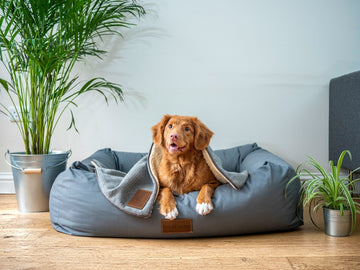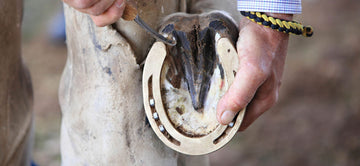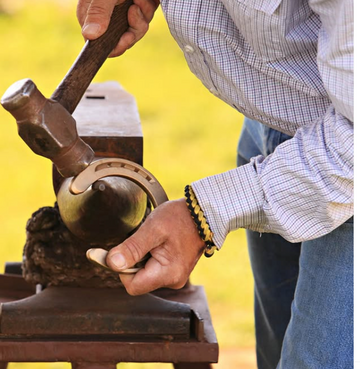Taking care of a dog is a rewarding experience, but it comes with responsibilities. Providing proper care ensures that your furry friend leads a happy, healthy life.
From nutrition to grooming, this guide outlines essential practices every pet parent should know.
Nutrition and Feeding
Feeding Your Adult Dog
Proper nutrition is the cornerstone of your dog’s health. Dogs require balanced diets tailored to their breed, dog's age, size, and activity level.
-
High-Quality Dog Food: Choose a reputable brand or consult your veterinarian to ensure the food meets your dog’s nutritional needs. Homemade dog food is also an option, but it must include the right balance of proteins, carbohydrates, fats, vitamins, and minerals.
-
Feeding Schedule: Feed adult dogs twice daily to maintain consistent energy levels. Avoid free-feeding to prevent overeating.
-
Access to Fresh Water: Always ensure your dog has access to clean, fresh water. Wash food and water dishes daily to prevent bacterial growth.
-
Avoid Overfeeding: Obesity is a common problem in dogs and can lead to health issues like joint pain, diabetes, and heart disease. Monitor portion sizes and avoid giving too many treats.
-
Pet Insurance: Consider investing in pet insurance to cover unexpected veterinary expenses and maintain your dog’s health long-term.
Water and Hydration
Providing fresh water is essential for a dog’s health and well-being. As a responsible pet parent, it’s crucial to ensure your furry friend always has access to clean, fresh water. Here are some tips to keep in mind:
-
Change Water Frequently: Regularly refresh your dog’s water to prevent bacterial growth and ensure it stays clean. This is especially important during hot weather or after exercise.
-
Use Safe Water Bowls: Opt for water bowls made from non-toxic materials that are easy to clean. Stainless steel or ceramic bowls are excellent choices.
-
Monitor Water Intake: Keep an eye on how much water your dog drinks. Increased or decreased water consumption can be a sign of health issues.
-
Encourage Hydration: Consider using a water fountain or a filtered water system to make drinking more appealing. Some dogs prefer running water, which can help keep them hydrated.
By following these tips, you can help ensure your dog stays healthy and hydrated, no matter the season.

Exercise and Physical Activity
Exercise Needs for a Healthy Dog
Physical activity is vital for maintaining a dog healthy and preventing obesity-related illnesses.
-
Daily Exercise: Most dogs need at least 30 minutes of exercise per day, though high-energy breeds may require more.
-
Breed-Specific Needs: Tailor activities to your dog’s breed. For example, herding breeds may enjoy agility courses, while smaller breeds may prefer shorter walks.
-
Mental Stimulation: Include activities like puzzle toys or training exercises to challenge your dog mentally.
-
Varied Activities: Combine walks, playtime, and high-energy activities like hiking or fetch. Always ensure these are appropriate for your dog’s age and health condition.
-
Rest Periods: Allow your dog to rest after exercise. Overexertion can lead to injuries, especially in older dogs or those with underlying conditions.
Mental Stimulation
Mental stimulation is vital for a dog’s emotional and cognitive well-being. As a pet parent, it’s essential to provide your dog with activities that challenge their mind and keep them engaged. Here are some ideas:
-
Puzzle Toys: Invest in puzzle toys that dispense treats or kibble. These toys challenge your dog’s problem-solving skills and keep them entertained.
-
Training Exercises: Engage in obedience training or agility exercises. These activities not only provide mental stimulation but also strengthen the bond between you and your dog.
-
Toy Rotation: Regularly rotate your dog’s toys to keep them interested. Introducing new toys or hiding old favorites can prevent boredom.
-
Socialization Opportunities: Consider enrolling your dog in doggy daycare or hiring a dog walker. Social interactions with other dogs and people provide valuable mental stimulation.
Incorporating these activities into your dog’s routine can help keep their mind sharp and their spirits high.
Health and Wellness: Importance of Regular Veterinary Check Ups
Maintaining your dog's health involves preventive care and regular check-ups.
-
Veterinary Visits: Schedule annual vet visits for vaccinations, parasite prevention, and health screenings.
-
Parasite Prevention: Protect your dog from fleas, ticks, and heartworms with veterinarian-recommended treatments.
-
Monitoring Health: Watch for changes in behavior, appetite, or physical condition. Early detection of issues can prevent more serious health problems.
-
Spaying and Neutering: Consider spaying or neutering to prevent unwanted litters and reduce the risk of certain cancers.
Regular Veterinary Checkups
Regular veterinary checkups are crucial for maintaining your dog’s health and detecting any potential health issues early on. As a responsible pet parent, it’s essential to schedule regular checkups with your veterinarian. Here are some tips to keep in mind:
-
Annual and Bi-Annual Visits: Schedule annual checkups for adult dogs and bi-annual checkups for senior dogs. These visits are vital for vaccinations, parasite control, and overall health assessments.
-
Follow Vet Recommendations: Adhere to your veterinarian’s advice regarding diet, exercise, and mental stimulation. They can provide tailored recommendations based on your dog’s breed, age, and health status.
-
Monitor Health Changes: Keep your veterinarian informed about any changes in your dog’s behavior, appetite, or physical condition. Early detection of issues can lead to more effective treatments.
-
Comprehensive Care: Discuss all aspects of your dog’s care during checkups, including dental health, weight management, and preventive measures.
By prioritizing regular veterinary visits, you can ensure your dog remains a healthy and happy companion for years to come.

Grooming and Hygiene
Grooming Your Dog
Grooming, tailored to your dog's breed, keeps your dog comfortable, reduces shedding, and prevents skin conditions.
-
Regular Brushing: Brush your dog’s coat to prevent matting and reduce shedding. The frequency depends on their coat type—short-haired breeds require less brushing than long-haired ones.
-
Nail Trimming: Overgrown nails can cause pain and lead to joint problems. Trim your dog’s nails regularly or have a professional groomer handle it.
-
Ear Cleaning: Clean your dog’s ears to prevent infections and wax buildup. Use a vet-approved ear cleaner and avoid inserting anything deep into the ear canal.
-
Bathing: Bathe your dog as needed, typically every 4–6 weeks, or more often if they get dirty. Use dog-specific shampoo to avoid skin irritation.
-
Dental Care: Brush your dog’s teeth regularly with a pet-safe toothpaste. Dental health impacts overall health, and poor oral hygiene can lead to infections.
Safety and Environment
Creating a Safe Environment
Your home should be a dog safe haven, free from hazards that could cause harm.
-
Dog-Proof Your Home: Remove toxic plants, secure electrical cords, and keep medications and cleaning supplies out of reach.
-
Comfortable Space: Provide a cozy bed and a quiet area where your dog can rest undisturbed.
-
Leash and Microchip: Always use a leash in public areas and consider microchipping your dog for identification in case they get lost.
-
Secure Outdoor Areas: Ensure your yard is escape-proof with secure fencing.
-
Avoid Dangerous Foods: Keep chocolate, grapes, onions, and other toxic foods out of your dog’s reach.
Training and Socialization
Training and Socialization for a Happy Dog
Training and socialization are critical responsibilities of a responsible pet owner for ensuring your dog becomes a well-behaved and confident companion.
-
Start Early: Begin training and socialization during puppyhood, but it’s never too late to start.
-
Positive Reinforcement: Reward good behavior with treats and praise. Avoid punishment, which can lead to fear and aggression.
-
Socialization: Expose your dog to various people, dogs, and environments to build confidence and reduce anxiety.
-
Obedience Training: Teach basic commands like sit, stay, and come. Advanced training, like agility or scent work, can provide additional mental stimulation.
-
Consistency and Patience: Dogs learn at their own pace, so remain consistent and patient throughout the training process.
Identification and Emergency Preparedness
Ensuring Your Dog’s Safety
-
Identification Tags: Pet parents should make sure their dog wears a collar with up-to-date contact information.
-
Emergency Preparedness: Keep an emergency kit with your dog’s medical records, food, water, and medications.
-
First Aid Knowledge: Learn basic first aid for dogs to handle minor injuries or emergencies until professional help is available.
Special Considerations
Caring for Your Dog in Extreme Weather
Dogs are sensitive to extreme temperatures and require extra care during harsh weather conditions.
-
Hot Weather:
-
Provide shade and fresh water during hot days.
-
Avoid exercising your dog during peak heat hours to prevent heatstroke.
-
-
Cold Weather:
-
Ensure your dog has a warm, dry place to rest.
-
Use dog sweaters or coats for short-haired breeds during walks.
-
-
Behavior Monitoring:
Watch for signs of distress, such as excessive panting in heat or shivering in cold weather.
Frequently Asked Questions
Can I pay someone to check in on my dog?
Yes, pet sitters or dog walkers can provide care and companionship when you’re unavailable.
What care do dogs need?
Dogs need proper nutrition, exercise, grooming, regular veterinary check ups, and love and attention.
What are the basic care needs of a dog?
Basic needs include food, water, shelter, exercise, grooming, and medical care.
How often should you bathe dogs?
The frequency depends on the breed and lifestyle, but typically every 4–6 weeks.
How to care for a dog for beginners?
Start with high-quality food, regular exercise, basic training, and routine vet check-ups.
How to care for an indoor dog?
Provide mental stimulation, regular walks, and a comfortable living space.
Essential Care for Dogs Conclusion
Caring for a dog is a rewarding commitment that requires attention to their physical, emotional, and social needs.
By following these best practices for nutrition, exercise, grooming, and training, you can ensure your furry companion leads a happy and healthy life.
Embrace the journey of pet parenthood and cherish the unconditional love your dog provides in return.










